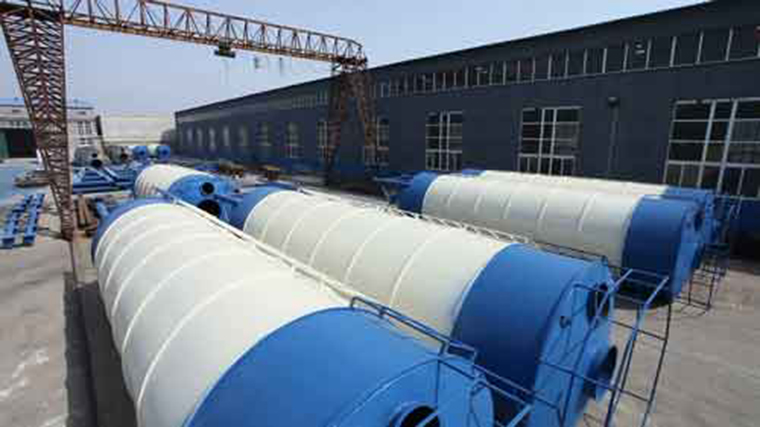

The cement silo is generally used in the bulk cement storage of the concrete mixing plant. It is a closed tank for storing bulk materials. It is suitable for storing various bulk materials such as grain, cement and fly ash. The tank body is equipped with a material level system. Displaying the location and amount of material, the arching device can relieve the solidification caused by the material deposition for too long.

1. When working in bulk cement silo, it must be erected by a special crane, then placed on a pre-precast concrete foundation, and the verticality of the cement silo after standing up with the horizontal plane is checked, and then the bottom and foundation are pre-grounded. The embedded parts are welded firmly.
2. After the storage bin is fixed, the cement is transported by the bulk cement truck to the construction site, and then the conveying pipeline of the bulk cement truck is connected with the feeding pipeline of the cement silo, and the cement in the tank is transported by the gas pressure of the bulk cement truck. Go to the cement silo.
3. In the process of transporting cement into the storage bin, the operator should uninterruptedly press the button of the vibration motor of the dust collector to shake off the cement attached to the bag of the dust collector to prevent the bag from being blocked and the warehouse to be exploded.
4. Once the bag is blocked, the pressure in the chamber exceeds the safety pressure of the top pressure safety valve, and the pressure safety valve can open the pressure in the release chamber to prevent the occurrence of a burst accident.
5. Through the high and low level, the warehouse can be observed and the material is missing.
6. When discharging is required, first open the manual discharge valve at the bottom of the cone and then transport the cement through the cement conveyor (screw conveyor). (In the process of discharging, if the phenomenon of "arching" occurs, press the button of the solenoid valve of the arching device in time to blow the air, eliminate the "arching" and feed, and ensure the smooth supply of cement.)
7. When the cement conveying device (screw conveyor) fails, first close the manual discharge valve at the bottom of the cone to prevent the cement from overflowing and causing waste.